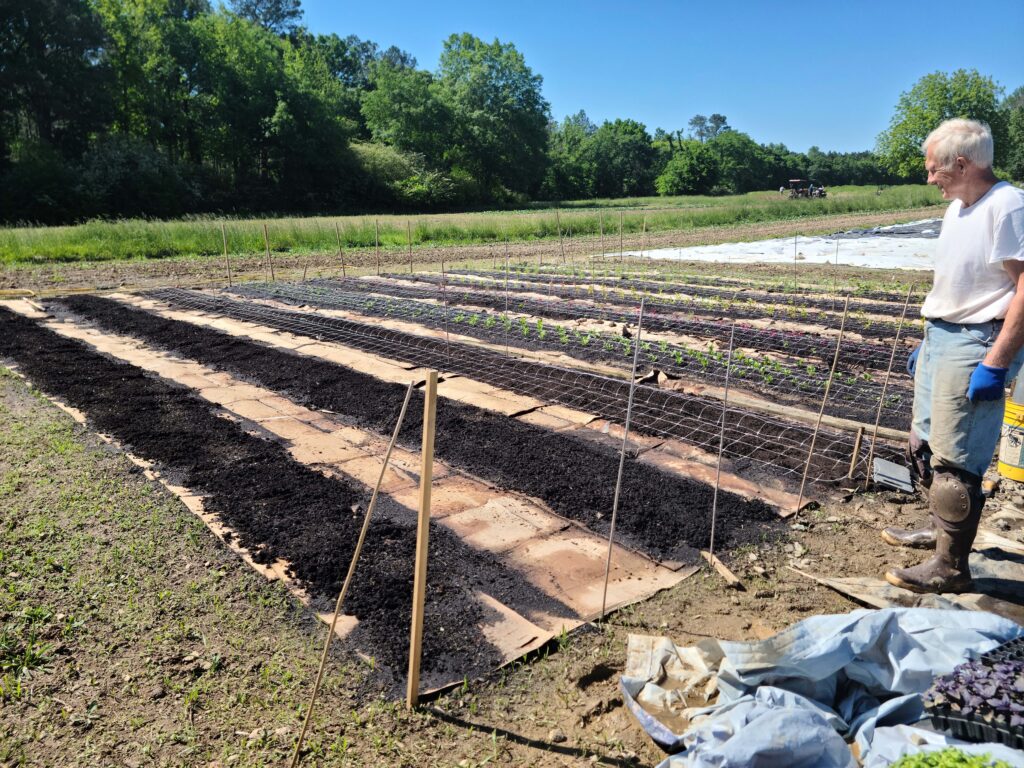Too Much of a Good Thing: Overuse of Compost
go.ncsu.edu/readext?955633
en Español / em Português
El inglés es el idioma de control de esta página. En la medida en que haya algún conflicto entre la traducción al inglés y la traducción, el inglés prevalece.
Al hacer clic en el enlace de traducción se activa un servicio de traducción gratuito para convertir la página al español. Al igual que con cualquier traducción por Internet, la conversión no es sensible al contexto y puede que no traduzca el texto en su significado original. NC State Extension no garantiza la exactitud del texto traducido. Por favor, tenga en cuenta que algunas aplicaciones y/o servicios pueden no funcionar como se espera cuando se traducen.
Português
Inglês é o idioma de controle desta página. Na medida que haja algum conflito entre o texto original em Inglês e a tradução, o Inglês prevalece.
Ao clicar no link de tradução, um serviço gratuito de tradução será ativado para converter a página para o Português. Como em qualquer tradução pela internet, a conversão não é sensivel ao contexto e pode não ocorrer a tradução para o significado orginal. O serviço de Extensão da Carolina do Norte (NC State Extension) não garante a exatidão do texto traduzido. Por favor, observe que algumas funções ou serviços podem não funcionar como esperado após a tradução.
English
English is the controlling language of this page. To the extent there is any conflict between the English text and the translation, English controls.
Clicking on the translation link activates a free translation service to convert the page to Spanish. As with any Internet translation, the conversion is not context-sensitive and may not translate the text to its original meaning. NC State Extension does not guarantee the accuracy of the translated text. Please note that some applications and/or services may not function as expected when translated.
Collapse ▲There is such a thing as too much of a good thing. This is a universal truth, as much as we may want to ignore it. The garden is a place where we can experience the letdown of loving our spaces a little too much. I find that folks with the best of intentions can hear a bit of information extolling the benefits of some product or practice and try to apply that to their gardens, when they may not understand there are parameters and limitations to those products and practices. I have gotten a lot of calls over the year I have been here where folks have said they put compost in their gardens and don’t understand why they are having issues with their vegetables. Let’s dig into why.
Why Compost is Good
Soil health is critical to life. Our plants and food grow in it. Our livestock graze from the plants rooted into it. Our houses are built on it. We walk on it. Soil absorbs carbon and stormwater. Compost as a soil amendment enhances some of these major functions.
There are many reasons why using compost in the landscape is good. The US Composting Council has outlined and verified 12 main benefits of composting. There are a couple points worth pointing out. Compost has been shown to improve soil structure and porosity. This is another way of saying this is how air and water can move into the soil! It reduces the bulk density of clay soils, so if you have clay, this is REALLY how you break it! Compost also improves moisture-holding capacity of sandy soils, because, as those of you who have sandy soils know, they leach nutrients and dry out quicker! Finally, compost improves the cation exchange capacity (CEC) of soils. The way to think about this is like adding charging stations to your soil where nutrients can be stored and accessed by your plants and other beneficial organisms.
Where We Go Wrong
The benefits of compost are compelling, and folks who have composted and used compost on their garden plots in the past can attest to these benefits. So, HOW can we go wrong? If a little compost is good, a lot of compost has to be better, right? Not necessarily.
The biggest mistake I see people make is they think they can grow vegetables in straight compost. The physics and chemistry of compost are not the same as soil or potting media. Compost is also NOT a fertilizer, but a soil amendment, and additional fertility may need to be added.
In the case of in-ground garden beds, I have heard of people “digging out” their “bad” soil and pouring in straight compost to grow their plants in. This strategy does not have the desired effect because of the chemistry and physics of soil and water. It creates a perched water table and what ends up happening is the water is held mainly in the compost, so the roots do not extend into the soil and thus are not resilient in the case of drought. What can also happen is the chemistry of water-logged compost can change such that nutrients in the soil cannot be accessed by the plants, so they look nutrient deficient no matter how much fertilizer you put in.
Folks who have raised beds are not immune to compost overuse either. Gardeners think they can overcome challenging soil conditions by using raised beds, planters or pots. It is still not appropriate to use straight compost in these situations. Again,physics and chemistry play a role in these growing conditions. It is important to have a mixture of large, medium and small particle sizes in raised beds and container growing situations. Using potting media is critical, especially something with pine bark fines or soil conditioner as the bed volume is greater. Most compost has a fine texture and will become water-logged quickly.

How to Use Compost Effectively
There are a number of ways to use compost effectively in your landscape, and what your landscape goals are will dictate how to best utilize this black gold.
People who are growing turfgrass, vegetables or ornamental plants using their native soil can apply compost through topdressing, incorporating into the top layer of soil, or after aerating by applying a layer of compost and watering it into the aeration holes. Compost should never be more than five percent of the mineral soil profile. It is important to always perform a soil test and apply fertilizer at the recommended rate. If you plan to add compost, do that prior to soil testing.
Potting media for raised beds can be amended with compost, either as a top-dressing or mulch, or can be mixed in prior to planting. How much compost should be added will be determined by the texture of the potting media and the texture of the compost. It is critical there is a good mixture of large to medium to small particles in a media mix for raised beds.
For more information about using compost in your landscape contact your local N.C. Cooperative Extension Office.
Resources
Composting Chapter in the Extension Gardener Handbook
City of Sanford Composting Facility
Citations for Benefits of Compost
Amanda Wilkins is the Horticulture Agent for North Carolina Cooperative Extension in Lee County.




